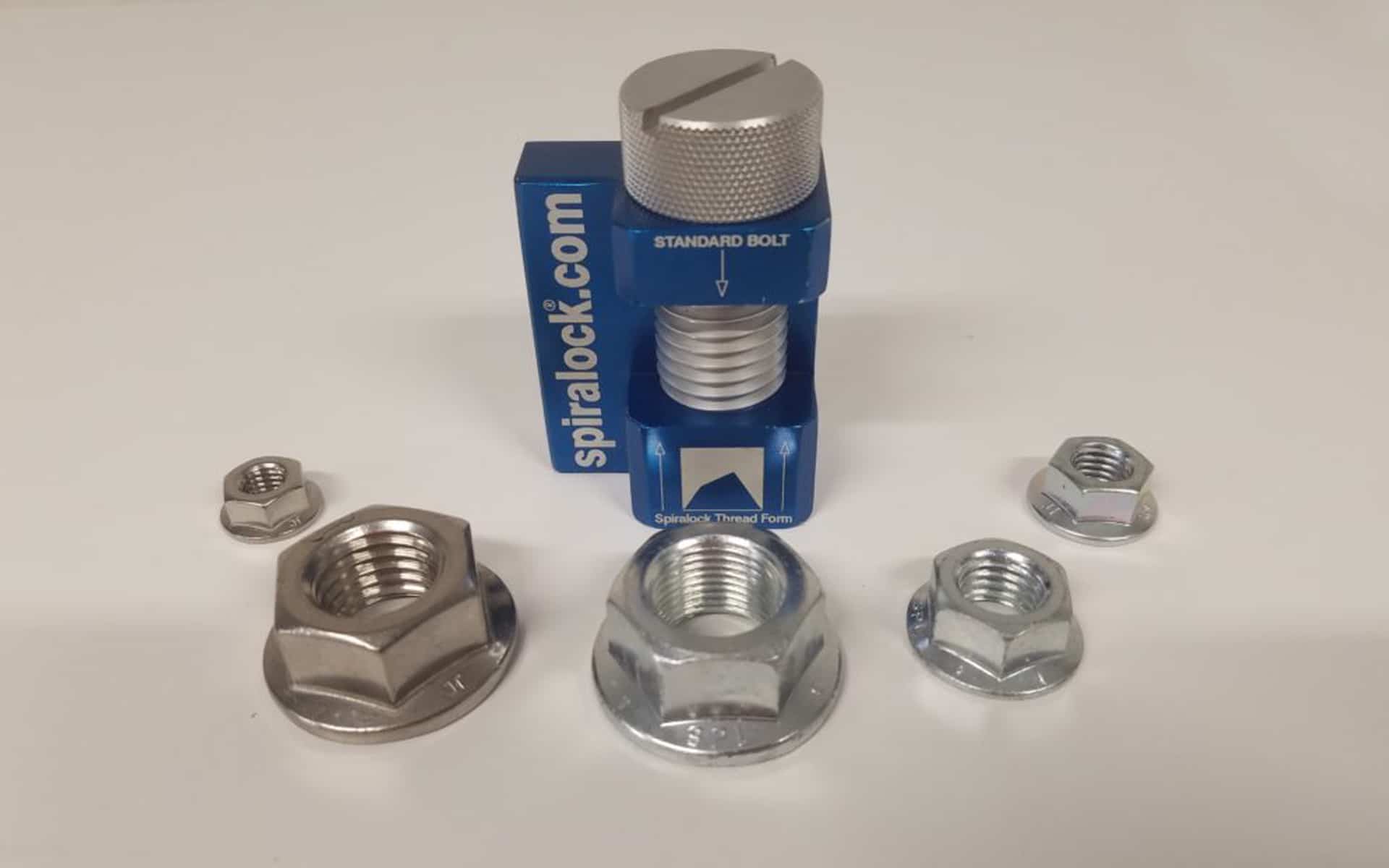How Infastech is preventing screw-ups with Spiralock
Nut threads are susceptible to damage from machine vibration and other stressors that lead to danger and downtime. Infastech Engineered Fastening focuses on finding the answer.
Mine sites are hazardous work environments, especially when it comes to machinery.
Poorly designed or incorrectly fitted bolted joints are sometimes an overlooked problem area of mine site machinery. Vibratory impacts, heat and other stressors caused by the machines can loosen these joints over time, resulting in downtime (whether scheduled or unscheduled) for repair or replacement to take place.
A lack of confidence in these fasteners can lead to torque checks and other tests to ensure they have not become loose or worn over time. The loss of torque in fasteners is a primary concern of machine maintenance, as the effect of vibration in the long-term can cause (in particular) the end threads of nuts to become misshapen and loosen the bolt.
Damaged, broken or loose nuts and bolts don’t just affect the company’s bottom line in the lost time it takes to repair them; they can be dangerous too. This includes not just the danger to those working in the vicinity of the machine should they fail, but the potential dangers faced by repair staff, who often work at heights or in tight spaces to rectify the damage.
It is important therefore that workers seek a reliable lock nut to help maintain confidence in operating machinery.
Traditional bolt locking mechanisms can encounter issues over time. Solutions such as nylon lock nuts, washers and adhesives — both used for holding threads in place — can warp or melt when introduced to high heats and are not expected to last a long time. Adhesives also require cleaning and reapplication, which can increase maintenance costs.
Meanwhile, potentially problem-solving design elements such as adjusted clamp lengths or increased bolt tensioning are generally not on the cards due to the structural and technical difficulties of their implementation.
Infastech Engineered Fastening has introduced the specially-engineered Spiralock nut to the market to counter these durability problems. Spiralock is compatible with standard bolts, and possesses a superficially similar design to other types of screw nuts. It distinguishes itself through the design of its threading, however, which uses a wedge profile outside of standard ISO profiling.
Spiralock includes a wedge in the root of the thread flank angled at 30 degrees. This introduces a mechanical ramping effect that imparts proportional resistive torque against the bolt in an even distribution across the length of the thread. This leads to massive resistance improvements against external factors such as vibration and heat.
This 30-degree wedge allows the male fastener to spin freely relative to the female nut when compared with the standard 60-degree internal thread profile.
This means the thread self-locks when the wedge ramp pushes against the male thread, creating a tight fit and eliminating the radial clearance issues typical of standard threading.
Research by the Massachusetts Institute of Technology (MIT) measured a load of 24 per cent on the Spiralock’s first engaged thread, 40 per cent lower than on a standard 60-degree thread.
Once a certain degree of load is placed on the thread flank that is slightly adjusted from the standard 60-degree profile, a mechanical advantage works against the further rotation of the bolt. This results in a geometry effect that comes into play as a slight interference push against the thread flanks, which resist further rotation.
“There’s a space around the thread flanks and that interface on initial assembly, and you only have to pick one up out of a box and you can run them on finger spin onto a mating thread,” explains Matt Wood, engineering and quality manager at Infastech Australia.
“The proof is in the pudding and there’s certainly no excess effort to get them started unlike a crimp lock or nylon lock nut. They run as a free running machine thread up until the point where you start to see preload.”
Spiralock nuts are applicable to many mining applications such as grinding mills, shaker screens, conveyors and other bulk handling applications, all of which can produce high heat and strong vibration during operation.
Alternative vibration-resistance methods for nuts such as nylon-insert nuts, known colloquially by the brand name Nyloc, help but come with several downsides. The nylon insert in Nyloc nuts improves resistance to turning, but they are also prone to decay and wear over time, and it is not recommended that such nuts are reused.
Heat can also cause issues, Wood explains.
“Nylocs can be problematic at temperatures of around 120–130 degrees Celsius,” he says.
“The reason Spiralock is so reusable is that you get elastic recovery in the mating threads, as opposed to Nyloc, which has a strict decay in terms of what they are able to do on multiple reuse.
“You can’t use Nylocs in any areas where there’s any serious heat because the nylon will melt and you’ll lose your lock. Spiralock looks like a normal nut but they don’t come loose like one.”
Other posited vibration-resistant alternatives, such as crimp lock nuts and cone lock nuts, can cause damage to the male thread during insertion. If a crimp lock is overly aggressive for the surface hardness condition of the mating thread (i.e. if the crimp lock is harder than the bolt it is fastening to), the ensuing pressure and friction can lead to galling, causing the nut to seize up.
Thread galling can be made worse by attaching nuts to fasteners made from alloys such as stainless steel, aluminium and titanium, which are covered in a corrosion-resistant oxide film that can shave off during insertion and jam the thread. Spiralock was borne from an industry need for an easy-to-use nut that wouldn’t be loosened by heavy vibration.
The nylon on Nyloc nuts can likewise catch these small particles, clogging the nut. In the worst cases, this results in workers having to cut the bolt or split the nut in order to separate the two for replacement. Nyloc nuts and crimp lock nuts are both susceptible to these galling issues, particularly when they are installed too quickly or with too much pressure.
“Spiralock starts with a Property Class 10 rating which means that on conventional high tensile bolts, which are generally around Class 8.8, they will be inherently stronger than the bolt onto which they are assembled,” says Infastech national sales manager Ashley Gorman.
“You won’t have seizures or gall that will require you to cut products off if they fuse together over time with some of your more aggressive crimping mechanisms, especially if you’ve got really aggressive crimps compared to slightly softer bulk materials.”
Testing of Spiralock fasteners with standard bolts has shown that Spiralock can enhance fatigue life by 300 per cent when compared with other fasteners. This is due to Spiralock’s uniform load distribution contributing to a reduction in stress points.
“When you’re comparing metal crimp lock nuts to Spiralock, the former are extremely aggressive in some case to the mating threads in the male thread element,” says Wood.
“As such, they rely on a fairly high-end, robust surface hardness (and finish criteria) to avoid excessive galling even before the part has been run up correctly.”
Spiralock’s uniform thread geometry has tightly controlled thicknesses in the plating that helps to improve the consistency of the relationship between torque and tension.
This provides a controlled increase in friction as load increases, saving energy during the run up. This also helps to ensure that the parts are easily removable.
“Those are two major benefits of Spiralock: consistency of torque tension from a mechanical point of view and reliability of removal for servicing,” concludes Gorman.



